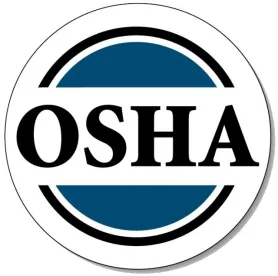The year 2018 saw the issuance of several noteworthy federal workplace safety and health decisions. Three of those decisions came in the cases of Secretary of Labor v. Angelica Textile Services, Inc.; United States v. Mar-Jac Poultry, Inc.; and Acosta v. Hensel Phelps Construction Co.
In Angelica Textile Services, the Occupational Safety and Health Review Commission clarified and reaffirmed the standard of proof for “repeated” violations: that an employer may rebut the Occupational Safety and Health Administration’s (OSHA) case of “substantial similarity” by showing (1) that the “conditions and hazards associated with [both] violations” were “disparate” or (2) that the employer “actively sought out and eliminated similar hazards” after the first violation. Previously, merely showing that an employer had been cited a second time under the same standard seemed, according to OSHA anyway, to meet its burden of proof. In short, OSHA had watered down the measure of “substantial similarity” considerably.
The U.S. Court of Appeals for the Fifth Circuit’s decision in Hensel Phelps Constructionis equally significant. Before that decision, the Fifth Circuit was the only circuit that had rejected OSHA’s position that it can cite employers that are deemed “controlling”—that is, in the position to control overall safety on the worksite or abatement of a particular hazard, such as general contractors. After 37 years of holding that position, the Fifth Circuit reversed itself and concluded that OSHA has the authority to cite a controlling employer even if that employer’s employees are not affected by the alleged violation. Although there are circuits that have not yet ruled on this issue, the Occupational Safety and Health Review Commission is likely to follow its own consonant controlling employer precedent in cases appealable to any circuit. (Most state-plan states have adopted this position as well.)
Finally, the Eleventh Circuit Court of Appeals’ decision in Mar-Jac Poultry is more limited in its scope, but is a clear win for employers. In that case, OSHA attempted to expand the inspection of a reported injury to a comprehensive (or wall-to-wall) inspection based upon (1) a regional emphasis program for poultry processing facilities and (2) OSHA’s review, during the injury inspection, of Mar-Jac’s 300 logs, which, according to OSHA, showed evidence of possible violations of the General Duty Clause of the Occupational Safety and Health Act of 1970 and OSHA standards related to ergonomic hazards, biological hazards, and struck-by hazards, among others. When the company refused to allow the expanded inspection, OSHA sought a warrant.
Initially, the federal court granted OSHA’s application and issued a warrant allowing the expanded inspection. However, when Mar-Jac moved to quash the warrant and presented its evidence, the magistrate judge changed his mind and determined there was no probable cause to issue the warrant after all. One of the district court judges adopted the magistrate judge’s recommendation and denied OSHA’s warrant application. OSHA then appealed that decision to the Eleventh Circuit based only on the 300 log argument, not the regional emphasis program argument.
The Eleventh Circuit agreed with the lower court. It found that “hazards,” as arguably identified on 300 logs, and “violations,” for which OSHA can cite an employer, are distinct concepts. “It is simply not the case that the existence of a hazard necessarily establishes a violation,” the court noted. The court also held that OSHA must prove more than that a hazard may exist (which is what an entry on a 300 log shows at best) to prove that a violation occurred and thus establish probable cause for the issuance of a warrant. The court went on to observe that the mere existence of an injury, as reflected on a 300 log, “does not necessarily mean that the injuries were caused by OSHA violations, or justify the issuance of an administrative warrant for evidence of OSHA violations.”
The Mar-Jac decision is a favorable one for employers in the Eleventh Circuit and other circuits in which employers have the opportunity and right to an evidentiary hearing. Unfortunately, employers do not have that right in all circuits. Therefore, Employers must be careful and deliberate when analyzing the circumstances of a particular case and refusing to allow an inspection that OSHA has decided to expand—or any inspection by OSHA, for that matter.




 />i
/>i

